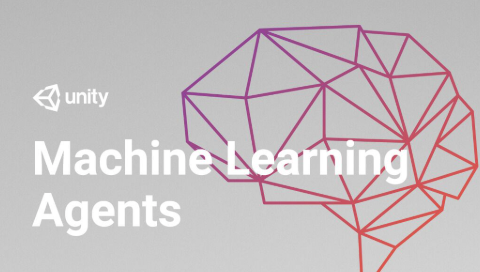In the fast-paced world of technology, AI tools are increasingly being integrated into virtual reality (VR) development, promising to revolutionize the way we create and experience immersive environments. But why should companies invest in AI tools for VR development? Are these tools truly the key to unlocking the full potential of VR, or are they just another overhyped trend? Let’s dive into the features of AI tools in VR development, exploring their capabilities, benefits, and real-world applications.
The Traditional Challenges in VR Development
VR development has traditionally faced a number of challenges, including high resource demands, complex content creation, and the need for real-time processing. These issues can hinder innovation and slow down the development process.
Traditional vs. AI-Driven Approaches
While traditional VR development relies heavily on manual design and coding, AI-driven approaches offer automation, enhanced realism, and improved user interaction.
Why Should Companies Use AI Tools for VR Development?
AI tools in VR development are designed to optimize content creation, enhance user experiences, and streamline development processes. Here’s a closer look at some of the leading AI tools that are transforming the VR industry.
1. Unity's ML-Agents

Unity's ML-Agents toolkit uses AI to enable developers to train intelligent agents within virtual environments. This tool is crucial for creating more dynamic and interactive VR experiences.
Features: Reinforcement learning, imitation learning, and customizable environments.
Benefits: Enhances interactivity, reduces development time, and improves user engagement.
Why It Stands Out: Its integration with Unity’s game engine makes it a versatile tool for developers looking to incorporate AI-driven behaviors into their VR projects.
2. NVIDIA Omniverse

NVIDIA Omniverse leverages AI to facilitate collaborative VR development and real-time simulations, allowing multiple users to work on the same project simultaneously.
Features: Real-time collaboration, AI-enhanced simulations, and photorealistic rendering.
Benefits: Streamlines workflows, supports team collaboration, and enhances visual fidelity.
Why It Stands Out: Its focus on collaborative development makes it ideal for large teams working on complex VR projects.
3. Unreal Engine's MetaHuman Creator

Unreal Engine's MetaHuman Creator uses AI to create highly realistic human characters for VR environments. This tool significantly reduces the time required to produce lifelike avatars.
Features: AI-driven character creation, customizable features, and real-time rendering.
Benefits: Reduces character development time, enhances realism, and improves user immersion.
Why It Stands Out: Its ability to produce high-fidelity characters quickly makes it a valuable asset for VR developers focused on creating immersive experiences.
4. DeepMotion

DeepMotion uses AI to provide real-time motion capture and animation solutions for VR, enabling developers to create more lifelike and responsive avatars.
Features: Motion capture, AI-driven animation, and real-time processing.
Benefits: Enhances realism, reduces animation time, and supports interactive experiences.
Why It Stands Out: Its focus on real-time motion capture makes it a powerful tool for developers seeking to create dynamic and engaging VR content.
5. Vuforia

Vuforia uses AI to enhance augmented reality (AR) and VR applications by providing advanced image recognition and tracking capabilities.
Features: Image recognition, object tracking, and spatial mapping.
Benefits: Improves user interaction, supports seamless integration, and enhances content accuracy.
Why It Stands Out: Its robust tracking capabilities make it ideal for developers looking to integrate AR elements into their VR projects.
How to Implement AI Tools in VR Development
Integrating AI tools into VR development requires careful planning and execution. Here are some steps to guide you.
Step-by-Step Implementation Process
Define Development Goals: Determine what you want to achieve with AI tools, whether it’s enhancing realism, improving interactivity, or streamlining workflows.
Select the Right Tool: Evaluate different AI tools based on their features, compatibility with your existing systems, and ease of use. Consider conducting a trial to assess their effectiveness.
Integrate with Existing Systems: Ensure that the AI tools you choose can integrate seamlessly with your current VR development platforms. This may involve working with IT experts to facilitate integration.
Train Development Teams: Provide training to development teams to ensure they understand how to use the AI tools effectively. This will maximize the benefits of the technology and improve development outcomes.
Continuously Monitor and Adapt: VR development is an ever-evolving field. Regularly review and update your AI tools and strategies to keep up with changing industry trends and technological advancements.
Potential Challenges and Solutions
Data Privacy: Ensure the AI tool complies with data protection regulations and has robust security measures in place to protect sensitive project data.
Change Management: Introducing AI tools may require changes in development workflows. Communicate the benefits and provide support to facilitate a smooth transition.
The Future of AI in VR Development
As AI technology continues to evolve, its role in VR development is likely to expand. Future developments may include more advanced AI models, enhanced integration with other technologies, and deeper insights into user behavior.
Emerging Trends
AI-Driven Realism: Future AI tools will offer more sophisticated realism options, allowing for highly immersive VR experiences.
Integration with IoT: AI tools will increasingly integrate with IoT technologies, providing real-time data and insights from connected devices.
Conclusion: Embrace the Future of VR Development
AI tools are not just another overhyped trend; they represent a transformative shift in how VR development is conducted and experienced. By embracing these technologies, companies can enhance realism, improve interactivity, and streamline development processes. Now is the time to explore and implement AI tools in VR development.
